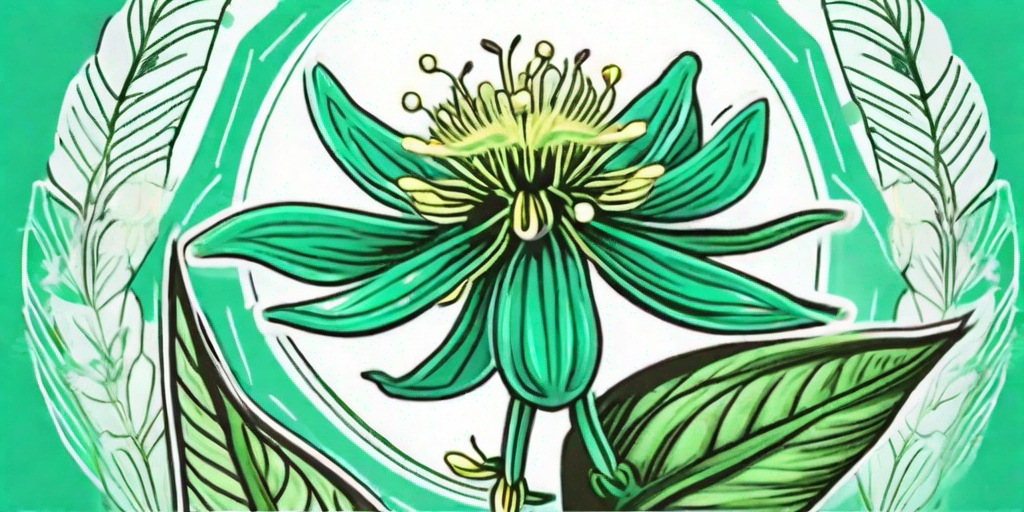
Welcome to the zesty world of Lemon Bee Balm, a plant that's not just a feast for the eyes, but also a delight for the taste buds. This perennial herb, with its vibrant flowers and lemony scent, is a favorite among gardeners, chefs, and bees alike. So, buckle up as we embark on a flavorful journey to explore this fascinating plant.
The Buzz about Lemon Bee Balm
Also known as Monarda citriodora, Lemon Bee Balm is a member of the mint family, and like its minty cousins, it's a hardy plant that's easy to grow. But what sets it apart is its unique lemony flavor, which has made it a popular ingredient in culinary creations.
But it's not just humans who are drawn to this plant. As the name suggests, bees are big fans too. The bright flowers of the Lemon Bee Balm are a veritable bee magnet, making this plant a great addition to any bee-friendly garden.
History and Origin
The Lemon Bee Balm is native to North America, where it has been used by indigenous tribes for centuries for its medicinal properties. It was later introduced to Europe, where it quickly gained popularity for its culinary uses.
Today, it's grown worldwide, both for its beauty and its flavor. Whether in a garden, a pot, or a field, this plant is sure to add a touch of zest wherever it grows.
How to Grow Lemon Bee Balm
Now that we've whetted your appetite, let's get down to the nitty-gritty: how to grow this zesty plant. Fear not, green thumbs and brown thumbs alike, for this is a plant that's as forgiving as it is flavorful.
First things first, Lemon Bee Balm prefers full sun and well-drained soil. It's drought-tolerant, making it a great choice for those forgetful waterers out there. And while it can tolerate poor soil, it will thrive in rich, fertile ground.
Planting
When it comes to planting, you have two options: seeds or cuttings. Seeds can be sown directly in the ground in spring, or started indoors in late winter. Cuttings, on the other hand, can be taken in late spring or early summer.
Once planted, Lemon Bee Balm is a fast grower, reaching up to 4 feet in height. So, make sure to give it plenty of space to spread its wings...or rather, its leaves.
Care and Maintenance
Caring for Lemon Bee Balm is a breeze. It's a low-maintenance plant that requires little more than regular watering and occasional pruning. And while it's not particularly prone to pests or diseases, keep an eye out for powdery mildew, a common issue with plants in the mint family.
As for fertilizing, a light application of a balanced fertilizer in spring should do the trick. And remember, while this plant is drought-tolerant, it will appreciate a drink during dry spells.
Uses of Lemon Bee Balm
From the garden to the kitchen, Lemon Bee Balm is a plant of many talents. Its bright flowers and fragrant leaves make it a great addition to any garden, while its zesty flavor makes it a hit in the kitchen.
But that's not all. This versatile plant also has a range of medicinal uses, from treating colds to soothing skin irritations.
Culinary Uses
When it comes to cooking, Lemon Bee Balm is a true showstopper. Its leaves can be used fresh or dried in a variety of dishes, from teas and cocktails to salads and desserts. And let's not forget about the flowers, which make a beautiful edible garnish.
Here are a few ways to use Lemon Bee Balm in the kitchen:
- Infuse in hot water for a refreshing tea
- Chop and sprinkle over salads for a zesty twist
- Use in marinades and dressings for a citrusy kick
- Decorate cakes and desserts with the vibrant flowers
Medicinal Uses
But the uses of Lemon Bee Balm don't stop at the kitchen door. This plant has a long history of medicinal use, thanks to its antiseptic, antifungal, and antibacterial properties.
Here are a few ways to use Lemon Bee Balm for health and wellness:
- Brew a tea to soothe a sore throat
- Apply a poultice to relieve skin irritations
- Use as an insect repellent
FAQs about Lemon Bee Balm
Is Lemon Bee Balm edible?
Yes, both the leaves and flowers of Lemon Bee Balm are edible and have a zesty, lemony flavor.
How do I use Lemon Bee Balm in cooking?
You can use the leaves fresh or dried in a variety of dishes, from teas and cocktails to salads and desserts. The flowers make a beautiful edible garnish.
Does Lemon Bee Balm attract bees?
Yes, the bright flowers of Lemon Bee Balm are a big draw for bees, making this plant a great addition to any bee-friendly garden.
How do I care for Lemon Bee Balm?
Lemon Bee Balm is a low-maintenance plant that requires little more than regular watering and occasional pruning. It prefers full sun and well-drained soil.
Conclusion
So there you have it, a comprehensive guide to the zesty world of Lemon Bee Balm. Whether you're a gardener, a chef, or just a lover of all things lemony, this plant is sure to add a touch of zest to your life. So why not give it a try? After all, life's too short for bland flavors.
Happy gardening, cooking, and buzzing with flavor!















